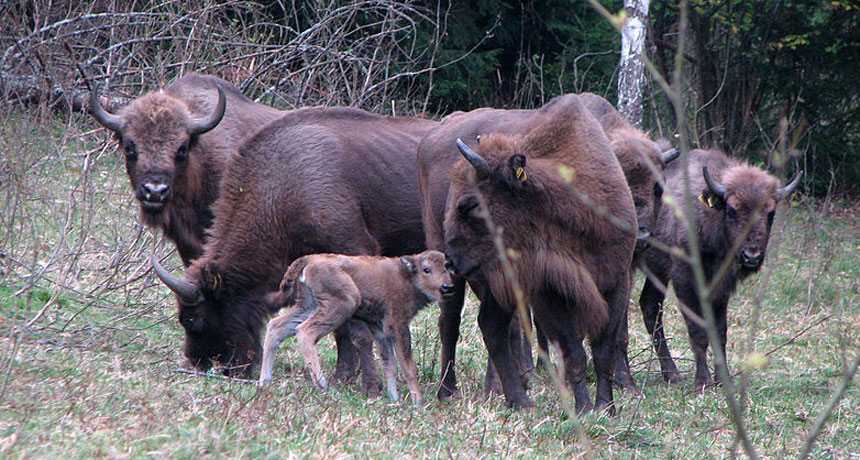Questions for ‘As big animals poop out’

European bison were declared extinct in the wild. But they have been reintroduced to countries such as Germany, Poland and Russia through a program known as “rewilding.”
Pryndak Vasyl/Wikimedia Commons (CC-BY-SA 3.0)
Share this:
- Share via email (Opens in new window) Email
- Click to share on Facebook (Opens in new window) Facebook
- Click to share on X (Opens in new window) X
- Click to share on Pinterest (Opens in new window) Pinterest
- Click to share on Reddit (Opens in new window) Reddit
- Share to Google Classroom (Opens in new window) Google Classroom
- Click to print (Opens in new window) Print
To accompany feature ‘As big animals poop out’
SCIENCE
Before reading:
1. What happens to the feces of animals in the wild?
2. Are those wastes good, overall, for nature? Or are they a problem?
During reading:
1. What are megafauna? Give three examples.
2. What type of ecosystem covered most of Earth around 12,000 years ago?
3. With fewer whales in the ocean, are more nutrients now reaching land — or fewer?
4. What are plankton — and describe the two main kinds?
5. Why are ocean nutrients like phosphorus and nitrogen important, based on this story?
6. What does anadromous mean? Give an example of one such animal.
7. How many types of large plant-eating megafauna existed about 12,000 years ago? How many of them still exist today?
8. How big is a blue whale an how have their numbers changed over the past 300 years?
9. The Living Planet Index suggests the populations of the vertebrates it tracks have changed dramatically since 1970. By how much?
10. What is poaching and what is rewilding?
11. What is whaling and what countries continue to allow it?
After reading:
1. People have played a major role in the extinction — or near extinction — of many large animals. Why do you think they are such potent predators? For some background, you might consider reading this relevant news story: Humans are ‘superpredators.’
2. In the partial breakdown of the cycle moving phosphorus and other nutrients from the sea to land, how have land-based systems coped? If the land still needs those nutrients, where will they come from? What impacts would come from having to find new sources?
MATHEMATICS
1. There were 48 large plant eating animals at the end of the last ice age, the story notes. How many of those remain (based on the story)? What percentage of those original 48 do the current animals represent? Show your calculations.
2. Whaling has taken a toll on the number of large marine mammals in the ocean. Consider that the average blue whale weighs perhaps 125 U.S. short tons. If their numbers have dropped from some 350,000 animals around 1700 to just 25,000 today, how has the mass of blue whales in the ocean fallen over that period? Show your work.
3. Birds and fish once moved 136,000 metric tons of phosphorus from the sea to land. Today the estimates are that only 4 percent as much (or less) may reach land. How many metric tons would 4 percent represent? Show your work.